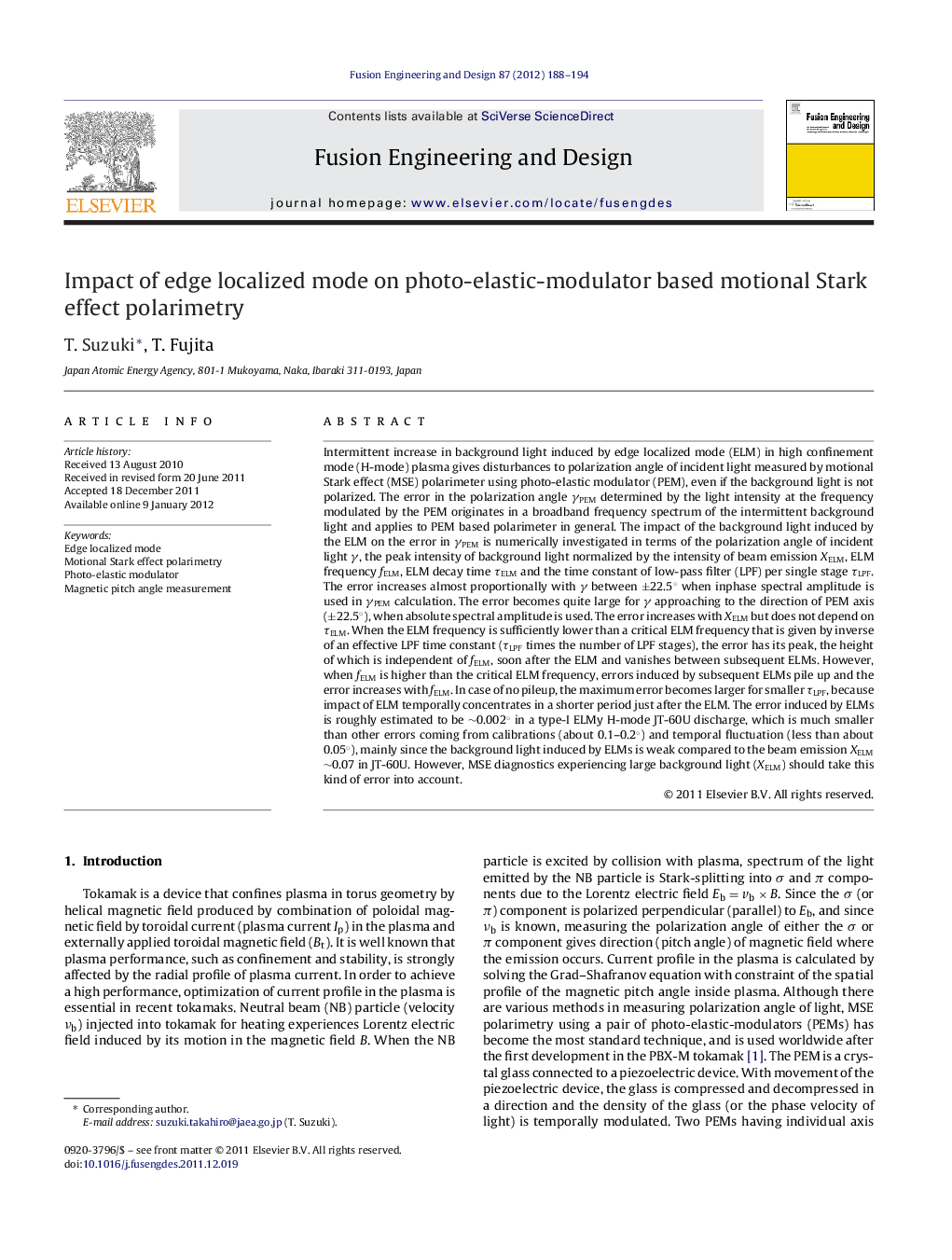| کد مقاله | کد نشریه | سال انتشار | مقاله انگلیسی | نسخه تمام متن |
|---|---|---|---|---|
| 271681 | 505004 | 2012 | 7 صفحه PDF | دانلود رایگان |

Intermittent increase in background light induced by edge localized mode (ELM) in high confinement mode (H-mode) plasma gives disturbances to polarization angle of incident light measured by motional Stark effect (MSE) polarimeter using photo-elastic modulator (PEM), even if the background light is not polarized. The error in the polarization angle γPEM determined by the light intensity at the frequency modulated by the PEM originates in a broadband frequency spectrum of the intermittent background light and applies to PEM based polarimeter in general. The impact of the background light induced by the ELM on the error in γPEM is numerically investigated in terms of the polarization angle of incident light γ, the peak intensity of background light normalized by the intensity of beam emission XELM, ELM frequency fELM, ELM decay time τELM and the time constant of low-pass filter (LPF) per single stage τLPF. The error increases almost proportionally with γ between ±22.5° when inphase spectral amplitude is used in γPEM calculation. The error becomes quite large for γ approaching to the direction of PEM axis (±22.5°), when absolute spectral amplitude is used. The error increases with XELM but does not depend on τELM. When the ELM frequency is sufficiently lower than a critical ELM frequency that is given by inverse of an effective LPF time constant (τLPF times the number of LPF stages), the error has its peak, the height of which is independent of fELM, soon after the ELM and vanishes between subsequent ELMs. However, when fELM is higher than the critical ELM frequency, errors induced by subsequent ELMs pile up and the error increases with fELM. In case of no pileup, the maximum error becomes larger for smaller τLPF, because impact of ELM temporally concentrates in a shorter period just after the ELM. The error induced by ELMs is roughly estimated to be ∼0.002° in a type-I ELMy H-mode JT-60U discharge, which is much smaller than other errors coming from calibrations (about 0.1–0.2°) and temporal fluctuation (less than about 0.05°), mainly since the background light induced by ELMs is weak compared to the beam emission XELM ∼0.07 in JT-60U. However, MSE diagnostics experiencing large background light (XELM) should take this kind of error into account.
Journal: Fusion Engineering and Design - Volume 87, Issue 2, February 2012, Pages 188–194